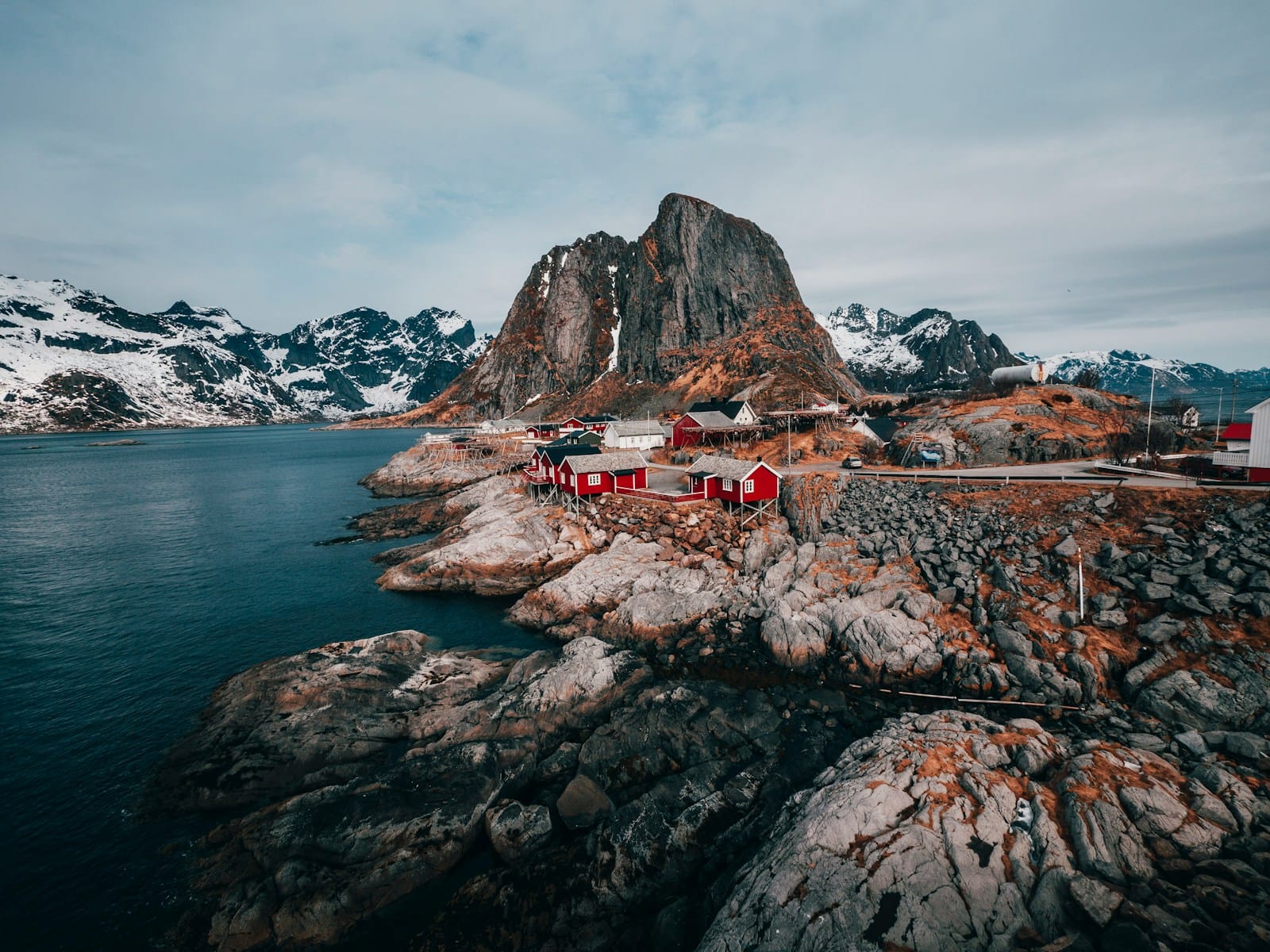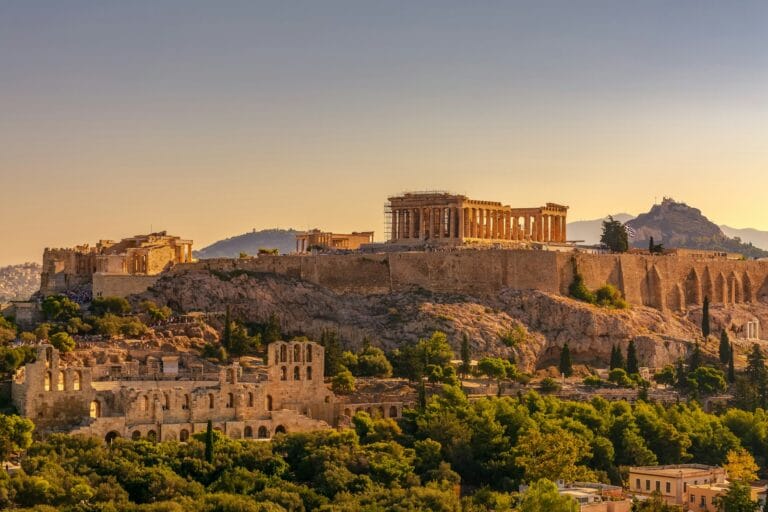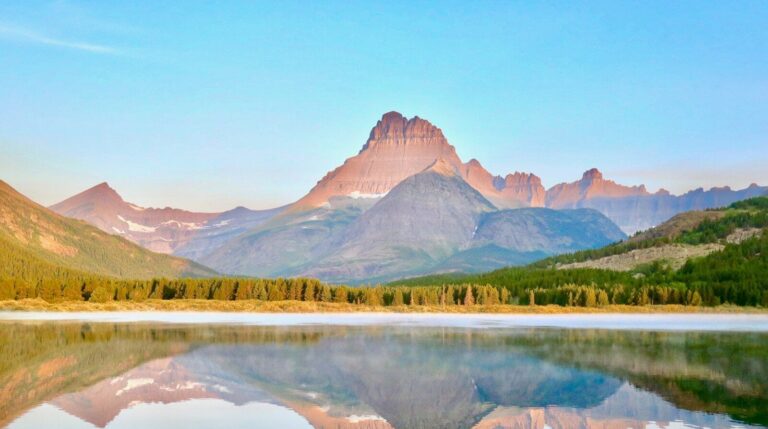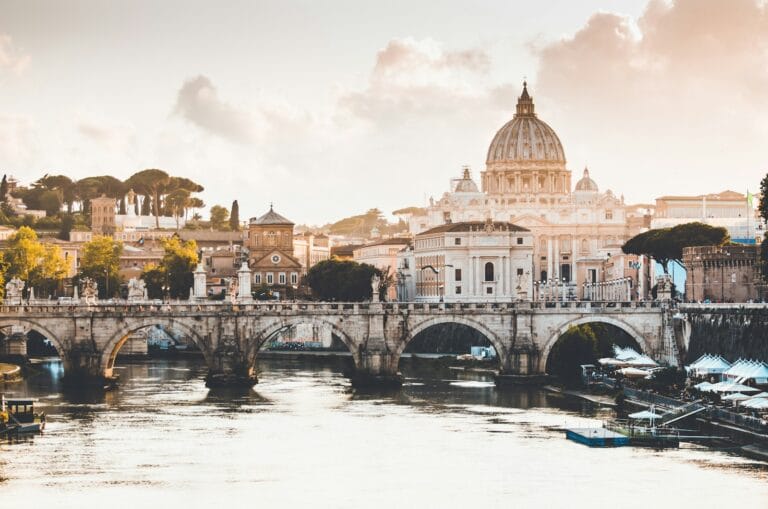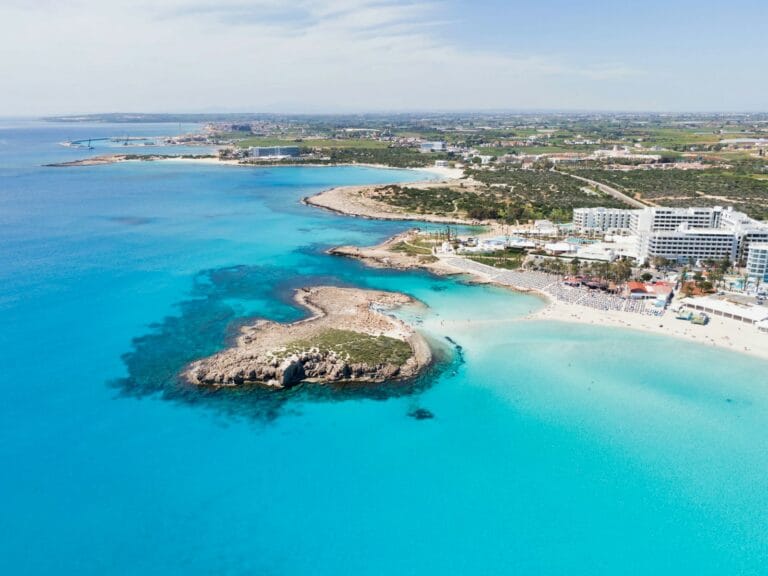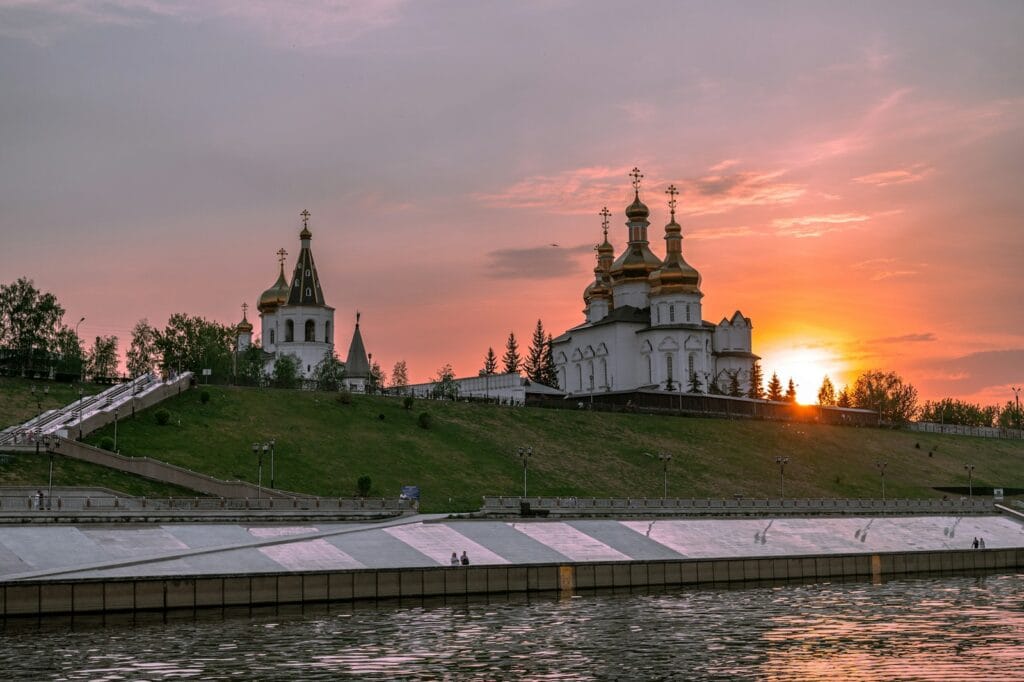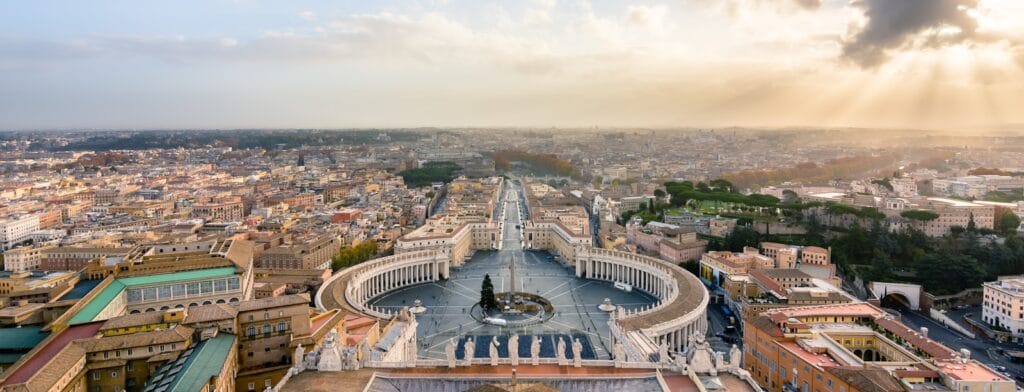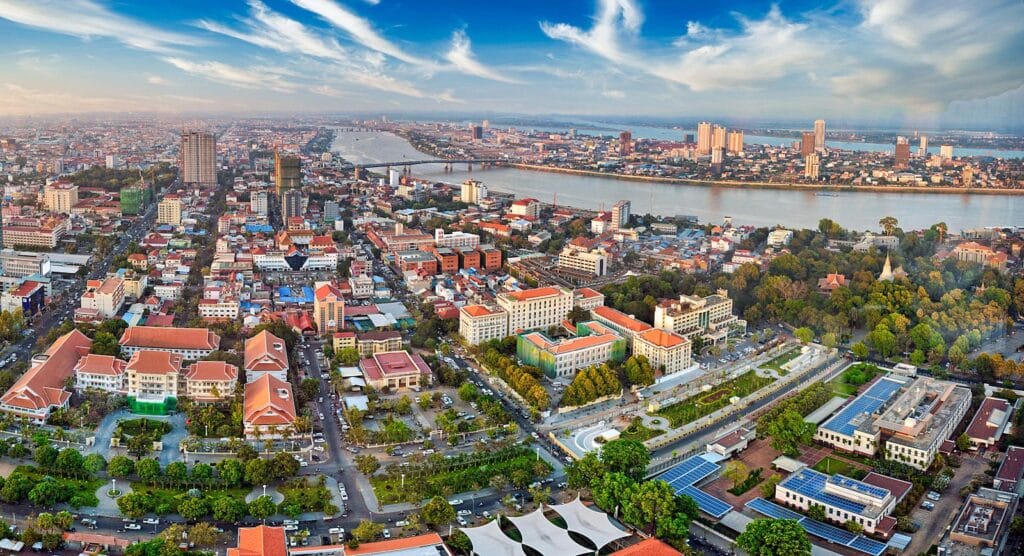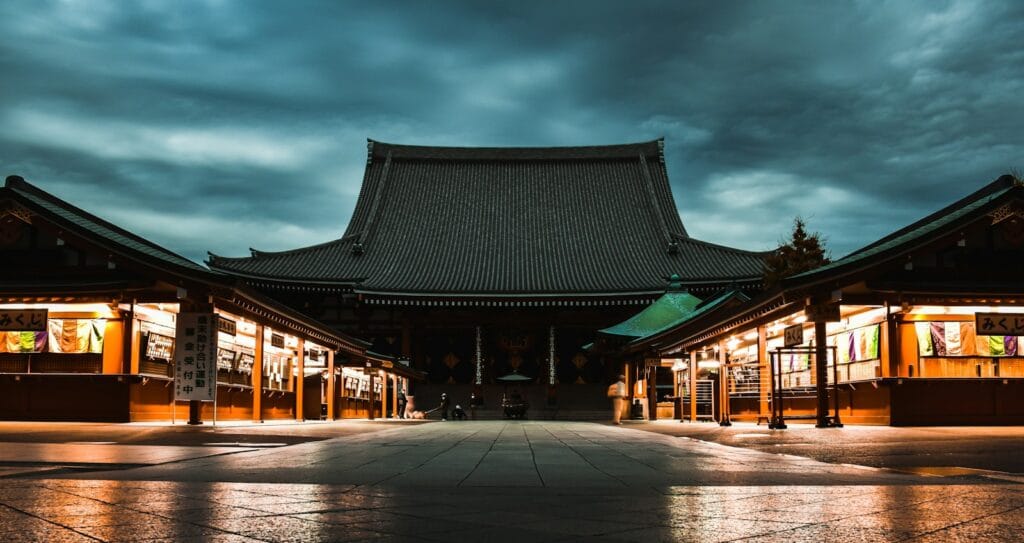Norway Travel Guide – Fjords, Culture, and Arctic Wonders
Intro to Norway Travel Guide
From the shimmering northern lights over Tromsø to the sun-drenched fjords of the west, Norway offers a rare mix of epic landscapes and refined culture. Hike past waterfalls in Geiranger, cruise through the Lofoten Islands, or dine in Oslo’s Michelin-starred restaurants. Whether you’re chasing natural beauty or Nordic heritage, Norway is a land that speaks to the soul.
Start planning your trip with our complete Norway tour guide — from regional highlights to unforgettable things to do in Norway.
💡Quick Facts:
Destination: Norway
Continent: Europe
Country: Norway
Area: 385,207 km² (148,729 mi²)
Population: ~5.5 million (2024 estimate)
Density: ~14 people per km²
Capital: Oslo
Regions/Subregions: Northern Norway, Central Norway, Western Norway, Eastern Norway, Southern Norway, Svalbard (territory)
Language(s): Norwegian (Bokmål & Nynorsk), Sami (recognized minority language), English widely spoken
Currency: Norwegian Krone (NOK)
Time Zone(s): CET (UTC+1), CEST (UTC+2 in summer)
Airports (Main/Regional):
– Oslo Gardermoen Airport (OSL)
– Bergen Airport, Flesland (BGO)
– Stavanger Airport, Sola (SVG)
– Trondheim Airport, Værnes (TRD)
– Tromsø Airport (TOS)
Climate: Temperate along the coast, subarctic in the north and interior – cold winters, mild summers
Known For: Fjords, Northern Lights, Viking heritage, scenic railways, Arctic wildlife, stave churches, modern design, midnight sun
🛂Arrival Info:
– Norway is part of the Schengen Area
– Visa-free entry for up to 90 days within 180 days for most EU, US, UK, Canadian, Australian passport holders
– ETIAS system will soon be required for visa-exempt travelers (implementation delayed to 2025)
– Schengen visa required for non-exempt nationals – apply via UDI Norway
💉Health Info:
– No mandatory vaccines required
– Routine vaccinations (MMR, tetanus, influenza) recommended
– Healthcare quality is excellent and accessible in all cities
– EU citizens can use EHIC; travel insurance recommended for others
– Reference: Norwegian Institute of Public Health
Travel health updates — get coverage here
Stay Informed with Official Updates: World Health Organization – International Travel and Health | Centers for Disease Control and Prevention – Global Travel Health
🚨Travel Advisory:
– Norway is considered one of the safest countries in the world
– Minimal crime and political unrest
– Take caution during winter mountain travel due to avalanches and icy roads
Stay Informed with Official Updates: US Travel Advisory | UK Foreign Travel Advice
📅Holidays:
– Norwegian Constitution Day (May 17): National celebration with parades
– Christmas (Dec 25–26): Major closures
– Easter (March/April): Holy Thursday to Easter Monday widely observed
– Midsummer (St. Hans): June 23–24, bonfire celebrations
– New Year’s Day (Jan 1)
💰Money Matters:
– Currency: Norwegian Krone (NOK)
– Credit/debit cards widely accepted, including for public transport
– Tipping is not expected but appreciated (5–10% at restaurants)
– ATMs (Minibanks) readily available
– Duty-free allowances: 1L spirits, 1.5L wine, 2L beer, 200 cigarettes – check Norwegian Customs
🚍Transport:
– Train: Scenic and reliable – try the Bergen, Dovre, and Nordland Lines
– Ferries: Connect fjords and coastal cities – part of the national network
– Car rentals: Ideal for fjord regions and Lofoten Islands
– Driving: Right-hand side, headlights required 24/7
– Buses and trams: Comprehensive in cities like Oslo, Bergen, Trondheim
📶Connectivity:
– High-speed mobile coverage and Wi-Fi throughout the country
– SIM cards available at airports, convenience stores, and mobile shops (Telenor, Telia, Ice)
– eSIMs supported
– Free Wi-Fi common in cafes, hotels, and even buses/trains
📜Laws & Etiquette:
– Alcohol sold in state-run Vinmonopolet shops (limited hours)
– Legal drinking age: 18 (21 for stronger alcohol)
– Norwegians value privacy, punctuality, and environmental responsibility
– LGBTQ+ friendly with anti-discrimination laws and same-sex marriage rights
– Dress modestly in churches; no shoes indoors in homes
🛡️Emergency Info:
– Emergency numbers: Police 112, Ambulance 113, Fire 110
– U.S. Embassy: Oslo
– Local pharmacies (Apotek) widely available
– Use embassy locator tools: Embassies Worldwide
🌦️Weather:
– Winter (Dec–Mar): Snowy, best for skiing and Northern Lights (especially in Tromsø, Alta)
– Spring (Apr–Jun): Melting snow, blooming landscapes
– Summer (Jun–Aug): Best time for fjords, hiking, midnight sun in the north
– Autumn (Sep–Nov): Crisp air, changing leaves, fewer crowds
Weather Forecast
Norway by Region – Where to Go
Explore Norway’s diverse regions, each with its own geography, character, and reasons to visit.
Eastern Norway – Urban Pulse & Forested Hills
This is home to Oslo, the nation’s vibrant capital, where modern design meets Viking heritage. Visit art museums, walk the Oslofjord waterfront, and take day trips to the forested trails of Nordmarka. Lillehammer, famed for the 1994 Winter Olympics, offers ski resorts and traditional wooden architecture.
Western Norway – Fjords and Waterfalls
Western Norway is postcard-perfect, defined by steep fjords and charming villages. Bergen, the gateway to the fjords, is a UNESCO city of wooden houses and seafood markets. Cruise through Geirangerfjord or hike above Nærøyfjord — both are UNESCO-listed and stunningly dramatic.
Northern Norway – Arctic Circle Adventures
Beyond the Arctic Circle, Northern Norway is a dream for adventurers. Tromsø offers northern lights in winter and midnight sun in summer. The Lofoten and Vesterålen islands deliver jagged peaks, sandy beaches, and fishing villages. Don’t miss Alta’s ancient rock carvings or a reindeer safari with the Sámi.
Southern Norway – Coastal Charm & Summer Escapes
A favorite summer region, Southern Norway boasts warm weather, white wooden towns like Risør and Arendal, and rocky skerries perfect for kayaking. Kristiansand is a family-friendly port with beaches, a zoo, and ferry links to Denmark.
Central Norway – Cultural Crossroads
Trondheim anchors this region, known for its Gothic Nidaros Cathedral, Norway’s most sacred site. Inland, the Dovrefjell and Trollheimen mountain ranges offer backcountry hiking, and the traditional farming valleys reveal rural Norwegian life.
Top Places to Visit in Norway
Whether you crave culture, nature, or once-in-a-lifetime experiences, these destinations should top your list.
Cultural Capitals
Oslo – Norway’s capital blends royal palaces, world-class museums, and waterfront life with cutting-edge cuisine.
Trondheim – A laid-back university town with medieval roots, cathedral grandeur, and cozy coffee culture.
Bergen – Norway’s rainiest city is also one of its most beautiful, with colorful houses, art galleries, and easy fjord access.
Nature Escapes
Geirangerfjord & Nærøyfjord – Towering cliffs and cascading waterfalls make these fjords unforgettable.
Lofoten Islands – Arctic beauty with dramatic coastlines, Northern Lights, and quaint fishing villages.
Jotunheimen National Park – Home to Norway’s highest peaks and some of the country’s most rewarding hikes.
Historic Sites
Stave Churches – Norway’s medieval wooden churches, such as Borgund and Urnes, are uniquely atmospheric.
Røros – A charming UNESCO-listed town with preserved 17th-century mining heritage.
Alta Rock Carvings – Prehistoric art that offers a glimpse into Norway’s earliest cultures.
Coastal & Island Gems
Ålesund – An Art Nouveau town rebuilt after fire, framed by fjords and islands.
Tromsø – Arctic city known for scientific research, Sámi heritage, and aurora tourism.
Kristiansand – A southern escape with white sand beaches, family attractions, and a laid-back vibe.
How to Choose Where to Go in Norway
Norway’s geography makes it ideal for theme-based travel. Here’s how to decide:
- For Fjords & Mountains – Head west to Bergen, Aurland, and Åndalsnes for iconic fjords and high-altitude hiking.
- For Arctic Experiences – Travel north to Tromsø or the Lofoten Islands for the northern lights, reindeer safaris, and midnight sun.
- For History & Culture – Base in Oslo or Trondheim to explore museums, stave churches, and Viking relics.
- For Coastal Relaxation – Visit Southern Norway’s beach towns and archipelagos for kayaking, swimming, and slow living.
- Efficient Pairings: Combine Oslo with Bergen via the scenic Bergen Railway. Or pair Tromsø with Lofoten for an Arctic loop.
How to Get Around Norway
Transportation in Norway is efficient, scenic, and occasionally slow due to terrain — but that’s part of the experience.
- Trains – Comfortable and punctual, with iconic routes like Oslo–Bergen and Dovre Line to Trondheim.
- Ferries & Coastal Boats – Essential for island hopping and fjord access. Hurtigruten cruises also function as coastal ferries.
- Domestic Flights – Key for long distances, especially to Northern Norway. Widerøe and SAS cover remote airports.
- Long-Distance Buses – Good for reaching smaller towns. Nor-Way Bussekspress and Vy Bus are main providers.
- Car Rentals – Ideal for fjord regions and national parks. Norway has well-maintained but narrow roads; tolls and ferries are common.
- Public Transport Passes – Oslo and Bergen offer city passes with transport, museums, and discounts.
Useful Apps – Entur (for all public transit), Vy (train tickets), and Troms Mobillett (Northern Norway transit).
Travel Budget & Costs in Norway
Norway is expensive, but savvy travelers can keep costs under control without sacrificing experiences.
Average Daily Budget
– Budget: $70–$100 (hostels, groceries, public transit)
– Mid-Range: $150–$250 (hotels, casual dining, car rental)
– Luxury: $300+ (boutique stays, fine dining, private tours)
Sample Prices
– Local Meal: $15–$25
– Hostel Bed: $40–$60
– Hotel Room: $120–$200
– Train Ticket (Oslo–Bergen): ~$100
– Fjord Tour: $60–$120
Money-Saving Tips
– Use supermarkets like REMA 1000 or Coop for budget meals
– Get city cards in Oslo or Bergen for discounts
– Opt for public ferries over private tours for fjords
– Travel in shoulder seasons (May/September)
Best Time to Visit Norway
Timing your trip depends on your interests and which regions you’ll explore.
- Summer (June–August) – Best for hiking, fjords, festivals, and the midnight sun. Ideal for the Lofoten Islands, Bergen, and southern coasts.
- Autumn (September–October) – Quieter trails, vivid fall foliage, and cheaper stays. Good for national parks and harvest festivals.
- Winter (November–March) – For snow sports, Sámi culture, and northern lights. Best in Tromsø, Alta, and Lillehammer.
- Spring (April–May) – Melting snow and waterfalls in full force. Good mix of activities before the summer rush.
Best time to visit Norway for hiking is June–September, and for aurora viewing, go from October to March.
Must-See Experiences in Norway
Norway is rich in natural and cultural treasures. Here are unforgettable things to do in Norway:
- Cruise the Geirangerfjord – Towering cliffs, gushing waterfalls, and a surreal stillness.
- Ride the Flåm Railway – One of the world’s steepest and most scenic train rides.
- Experience Sámi Culture – Visit reindeer farms, stay in a lavvu tent, or attend a joik music ceremony.
- Northern Lights Chase in Tromsø – Take a guided winter tour under the Arctic sky.
- Hike Besseggen Ridge – A thrilling mountain trail with views over emerald and blue lakes.
- Eat Fresh Seafood in Bergen’s Fish Market – Oysters, salmon, and king crab in a scenic harbor setting.
- Explore Oslo’s Museums – From Viking ships to Munch’s “The Scream”, culture lovers will be amazed.
- Join a Midnight Sun Kayak Tour – Paddle through golden light near Bodø or Tromsø in June.
Book immersive Norway tours and experience unforgettable things to do in Norway — from sacred Sámi rituals and fjord cruises to Arctic rail rides and island food adventures.
Best Travel Itineraries in Norway
Whether you have a week or two, Norway offers stunning routes tailored to different travel styles.
7-Day Classic Fjords & Cities
Route: Oslo → Flåm → Bergen
– Begin in Oslo: 2 days for museums, Vigeland Park, and fjord dining
– Scenic train to Flåm, explore fjord villages: 2 days
– Finish in Bergen: 3 days for Bryggen, fjord cruise, and hiking Mount Fløyen
10-Day Arctic Adventure
Route: Tromsø → Lofoten Islands → Bodø
– Start in Tromsø: 3 nights for aurora tours and dog sledding
– Fly or ferry to Svolvær, explore Lofoten: 4 days (kayaking, hiking, photography)
– End in Bodø: 2 nights for coastal culture and Saltstraumen whirlpools
2-Week Best of Norway Road Trip
Route: Oslo → Lillehammer → Geiranger → Ålesund → Bergen
– See central Norway’s mountain scenery, then descend to fjord country
– Drive the Atlantic Road and Trollstigen
– Mix hiking, scenic drives, and local stays
10-Day Culture and Countryside
Route: Oslo → Røros → Trondheim → Åndalsnes
– Focus on history, architecture, and slow travel
– Explore mining towns, stave churches, and take the Rauma Railway through dramatic valleys
Local Cuisine & Culinary Experiences
From seafood feasts to reindeer stew, Norway’s food culture is rooted in the land and sea.
Must-Try Dishes
- Rakfisk – Fermented trout, an acquired taste often eaten raw with sour cream and flatbread.
- Kjøttkaker – Norwegian meatballs in brown gravy, often served with peas and potatoes.
- Fårikål – National dish of mutton and cabbage, especially popular in autumn.
- Lutefisk – Dried whitefish soaked in lye, then steamed. Eaten with bacon and potatoes.
- Reindeer Stew (Bidos) – Hearty and rich, often found in Sámi regions of the north.
- Fresh Seafood – Arctic cod (skrei), salmon, and king crab are menu staples, particularly in coastal towns.
- Brunost (Brown Cheese) – Caramelized goat cheese with a sweet-savory flavor, often eaten on waffles.
Where to Eat
– Bergen Fish Market – Try local shellfish or grab takeaway seafood
– Traditional Farm Stays – Many offer home-cooked Norwegian meals
– Michelin Restaurants in Oslo & Stavanger – For gourmet takes on native ingredients
– Northern Norway Food Tours – Sample reindeer sausage, local cheeses, and Arctic herbs
Taste your way through Norway with local market tours, fjord-side cafés, and highland farm meals.
Travel Safety & Cultural Etiquette in Norway
Norway is one of the safest travel destinations, with a few nuances to note.
Safety Tips
– Low crime rates, but watch for pickpocketing in city centers or during festivals
– In remote regions, carry weather gear, maps, and emergency contacts
– Always register hiking plans in high-risk areas — weather shifts fast in the mountains
Cultural Etiquette
– Norwegians value personal space and quiet — avoid loud conversations on transit
– Tipping isn’t expected but rounding up the bill is appreciated
– Remove shoes when entering homes or mountain cabins
– Respect the “allemannsretten” (right to roam) — leave no trace when hiking or camping
Seasonal & Environmental Precautions
– Winter roads may close due to snow — check road status before driving
– Sunlight can be extreme in summer and absent in winter — pack accordingly
– Bring insect repellent in summer months, especially in the north
Where to Go Next – Pair Norway with These Destinations
Explore Norway’s neighbors and nearby countries for a broader Scandinavian or European adventure.
- Sweden – Easy rail or drive to Stockholm, with forests, lakes, and a more relaxed pace.
- Denmark – Take a ferry or short flight to Copenhagen for design, canals, and castle-hopping.
- Finland – Cross into Lapland for more Arctic landscapes, sauna culture, and reindeer treks.
- Iceland – Combine fjords with volcanoes; both countries offer epic landscapes and thermal springs.
- Scotland – Direct flights link Oslo and Edinburgh — trade fjords for castles and whisky trails.
Expand Your Itinerary and Explore more guides:
- Sweden Travel Guide
- Denmark Travel Guide
- Iceland Travel Guide
- Scotland Travel Guide
- Finland Travel Guide
Final Planning Checklist for Norway
Use this country-specific checklist to streamline your Norway travel prep.
- Finalize itinerary: fjords, cities, Arctic or mountain routes
- Reserve popular experiences early (fjord cruises, scenic trains, northern lights tours)
- Download Entur, Vy, and offline maps for rural access
- Check Schengen visa rules and passport validity (must be valid for 6 months)
- Arrange eSIM or local SIM (Telenor and Telia are top providers)
- Bring layers, rain gear, and good shoes — weather shifts fast
- Use a credit card with no foreign fees; cash is rarely needed
- Learn basic Norwegian greetings (“Takk!” means thank you)
- Research etiquette, hiking safety, and ferry schedules in advance
Explore Norway with confidence using our trusted tips, local insights, and region-by-region planning tools.
For more expert travel tips, practical strategies, and trusted tools — visit our Homepage and get inspired for your next trip.

